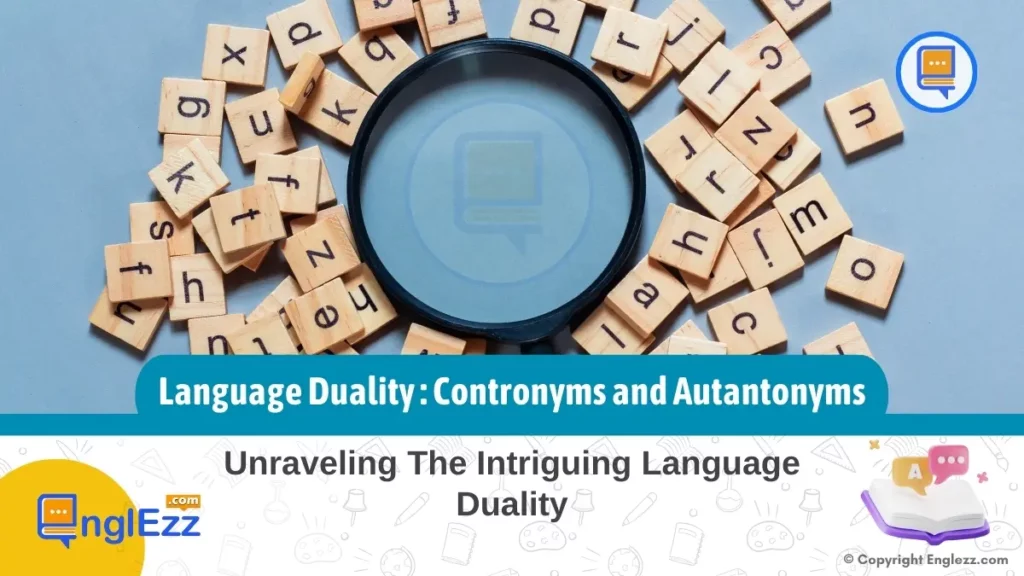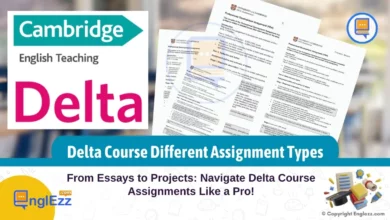Embark on a linguistic journey where words wield the power to both confuse and captivate, as we delve into the fascinating realms of language duality. Enter the enigmatic realm of contronyms and autantonyms; two linguistic phenomena that defy conventional language norms and invite us to explore the intricate tapestry of lexiconic complexities. Imagine a word that can mean its own opposite, or a term that effortlessly shifts from one meaning to its polar opposite with a mere change in context. Such is the mysterious allure of contronyms and autantonyms, where words become dual entities dancing between contradiction and harmony.
The Twisted Tale of Contronyms and Autantonyms
Prepare to unravel the secrets veiled within these linguistic marvels as we embark on an illuminating exploration of their nuances. Contronyms, those elusive lexical chameleons, challenge our understanding of language structure by embodying contradictory meanings in a single word. Autantonyms, with their dualistic nature, blur the lines between comprehension and conundrum – demonstrating how a single term can hold divergent interpretations within its linguistic grasp based on subtle contextual cues.

Through this linguistic odyssey, we aim to illuminate not just the intricacies of vocabulary but also shed light on how language reflects the complexities of human expression itself. Join us in deciphering this captivating narrative as we embark on an insightful endeavor to demystify the cryptic beauty of contronyms and autantonyms – where words transform from mere symbols into portals to boundless semantic horizons awaiting exploration.
Understanding Contronyms
Contronyms, also known as Janus words or auto-antonyms, are linguistic phenomena that embody the duality of language. These intriguing words possess two or more contradictory meanings, depending on the context in which they are used. This inherent ambiguity can often lead to confusion and misinterpretation in communication. For instance, consider the contronym “bolt.” It can mean both:
- “to secure tightly” as in “She bolted the door“
- and “to run away quickly” as in “He decided to bolt from the meeting.”
Such dual interpretations challenge conventional language rules, highlighting the complexity and flexibility embedded within our linguistic systems.
An exemplary case of a contronym is the word “screen,” which can signify both “to show publicly” and “to block from view.” This juxtaposition of contradictory meanings showcases how contronyms playfully twist language conventions, urging speakers to navigate these linguistic paradoxes with precision and awareness. The term “dust,” mentioned earlier as an autantonym too, serves as another fascinating example. It can mean both to remove dust (“She dusted the shelves”) and to sprinkle with a fine powder (“She dusted the cake with sugar”), illustrating how one word can carry diametrically opposed definitions.
In essence, contronyms serve as a testament to the dynamism and intricacies inherent in language construction. By embracing these deceptive words that defy traditional grammatical norms, we inadvertently acknowledge a deeper understanding of semantics and lexical ambiguity. As educators and language enthusiasts continue to unravel these enigmatic terms, they not only enhance their vocabulary but also develop a newfound appreciation for the layers of complexity interwoven within languages worldwide.
Exploring Autantonyms
Autantonyms, or auto-antonyms, are linguistic treasures that showcase the intricate dance of meanings within a single word. These unique words possess the remarkable ability to act as their own opposites, creating fascinating layers of complexity in language. Consider the word “sanction,” which can mean either to authorize an action or to impose a penalty for an action. This dual nature of autantonyms challenges our conventional understanding of how words convey meaning, highlighting the nuanced flexibility embedded within linguistic structures.
One illustrative example of an autantonym is the word “oversight.” While it typically signifies supervisory attention, it can also paradoxically refer to an unintentional omission or mistake due to lack of oversight. This duality inherent in autantonyms offers a captivating insight into how language evolves and adapts to convey contrasting meanings within the same lexical framework. By exploring autantonyms like “fast,” which can denote both moving quickly and being firmly secured in place, we unveil the richness and versatility of semantic nuances embedded within seemingly simple words.
Autantonyms provide a profound reflection of the dynamic nature of language, inviting us to appreciate the depth and complexity present in everyday vocabulary. Words such as “clip” that can represent both joining together and cutting apart exemplify how language mirrors the intricacies and contradictions inherent in human communication. Through exploring autantonyms like “left,” conveying both departure and remaining behind, we gain a renewed appreciation for the adaptive power of language in expressing diverse shades of meaning seamlessly intertwined within individual terms.
Significance of Contronyms and Autantonyms in Linguistics
Contronyms and autantonyms play a crucial role in linguistic analysis and interpretation by adding layers of complexity and depth to the study of language. These linguistic phenomena challenge traditional rules and expectations, forcing speakers to navigate through ambiguity with a heightened sense of awareness. For example, consider the word “fast,” which can mean moving quickly or something being fixed securely. This dual nature of words like “fast” exemplifies how contronyms force us to pause and carefully assess the context in which they are used for accurate interpretation.
Moreover, the presence of contronyms and autantonyms in language contributes significantly to its evolution over time. As new contexts emerge and meanings shift, these unique word structures showcase the adaptive nature of human communication. Understanding how words can carry contradictory meanings fosters a deeper appreciation for the fluidity of language dynamics. For instance, words like “overlook” or “clip” can have opposite implications based on their usage, underscoring the malleability inherent in linguistic expressions throughout history.
In educational settings, contronyms and autantonyms serve as valuable tools for teaching grammar, semantics, and lexical ambiguity. By exploring these linguistic quirks, students gain insights into the nuances of language structure and communication intricacies. Teachers can leverage contronyms as thought-provoking examples to engage students in critical thinking exercises that sharpen their analytical skills while deepening their understanding of semantic versatility. Encountering words that embody contradictory meanings encourages learners to approach language with curiosity and adaptability, laying a strong foundation for comprehensive linguistic comprehension in both academic and everyday contexts.
Practical Applications of Contronyms and Autantonyms in Education
In the realm of education, contronyms offer a valuable opportunity to cultivate critical thinking skills among students through word analysis exercises. By delving into words like “overlook” or “bolt,” which possess contradictory meanings based on context, learners are prompted to engage in deeper analytical thinking and linguistic interpretation. This process not only enhances their understanding of language subtleties but also encourages them to consider various perspectives in communication. By grappling with the dual nature of contronyms, students develop a sharper awareness of how language can shape meaning and foster nuanced interpretations.
Autantonym activities, on the other hand, present educators with an innovative approach to enhance vocabulary comprehension within the classroom setting. Through exercises involving autantonyms such as “fast,” which can denote both speed and security when used differently, students are challenged to grasp the multifaceted nature of words and their contexts. These activities not only expand students’ lexicons but also encourage them to appreciate the intricate dance between language structure and intended meaning. By actively engaging with autantonyms, learners gain a deeper insight into the fluidity and flexibility of language, fostering a more profound connection with its richness and complexity.

Moreover, understanding language duality – as showcased through contronyms and autantonyms – serves as a gateway for educators and learners alike to appreciate the intricacies of communication on a deeper level. By exploring these linguistic phenomena within educational settings, individuals are encouraged to view language not merely as a static tool for conveyance but as a dynamic system brimming with nuance and ambiguity.
Embracing this perspective fosters an environment where curiosity thrives, allowing for meaningful dialogues about language evolution and interpretation. Ultimately, by integrating the study of contronyms and autantonyms into educational curricula, teachers can empower students to navigate the complexities of communication with heightened sensitivity and acuity.Case Studies: Contronymic Expressions
In the realm of language, contronyms can create moments of confusion and misinterpretation that shed light on the intricacies of communication. Consider the verb “bolt,” for instance. This seemingly straightforward word can be a source of ambiguity depending on its context. In one scenario, “bolt” may mean to secure or fasten something firmly in place, whereas in another, it could signify a sudden escape or departure at full speed. Such dual meanings highlight the need for careful consideration when using ambiguous terms like contronyms to ensure clarity in written and verbal exchanges.
Another example illustrating this linguistic quirk is the word “oversight.” While it typically denotes supervision or management, it can also paradoxically refer to an unintentional mistake or omission. Imagine a situation where someone requests oversight on a project only to realize later that their intended interpretation differed from what was understood due to this contronymic expression’s conflicting meanings. Awareness of such linguistic nuances invites us to approach communication with heightened sensitivity and precision to avoid misunderstandings.
By delving into real-world instances where misinterpretations arise from contronymous expressions like “fast,” meaning both moving quickly and stuck firmly in place, we unravel the significance of linguistic clarity. Recognizing these instances not only enriches our understanding of language duality but also equips us with the tools needed to navigate potential pitfalls in communication. Through awareness and appreciation for words’ multifaceted nature, we illuminate pathways toward effective expression and interpretation while celebrating the richness and complexity inherent in human language.
Celebrating Language Diversity Through Contronyms and Autantonyms
In a world where language can sometimes seem fixed and precise, the presence of contronyms and autantonyms reminds us of the playfulness and flexibility inherent in linguistic expression. By unraveling the mystery behind these linguistic phenomena, we not only gain a deeper appreciation for the complexities of language but also celebrate its diversity. Contronyms challenge our understanding of words by presenting diametrically opposite meanings within a single term, forcing us to navigate nuanced interpretations depending on context. On the other hand, autantonyms showcase the dynamic nature of language structure, where one word can hold contradictory definitions, inviting us to explore the boundaries of lexical ambiguity.
By embracing contronyms and autantonyms as integral parts of language practice, educators and language enthusiasts alike can encourage curiosity, critical thinking, and linguistic exploration. Teaching students about these linguistic marvels not only hones their analytical skills but also fosters a respect for the intricate tapestry of communication that underpins human interaction. Through activities that explore contronyms’ shifting meanings or autantonyms’ dual interpretations, learners can engage with words in a dynamic manner that transcends traditional views on vocabulary acquisition.
As we delve into the world of contronyms and autantonyms, we uncover layers of complexity that enrich our understanding of language’s ever-evolving nature. Embracing these linguistic quirks allows us to marvel at the diverse ways in which words shape our thoughts and interactions. So let’s celebrate the inherent diversity reflected in contronyms and autantonyms, recognizing them not as barriers to clear communication but as portals to unlock new realms of linguistic exploration and appreciation.
Final Tips
- Context is Key: Always consider the context in which a contronym or autantonym is used to grasp its true meaning. Understanding the nuances of the sentence structure and surrounding words can help unravel any ambiguity present. For example, the word “fast” can mean both moving quickly or firmly fixed depending on its context in a sentence, showcasing how crucial context is in deciphering these unique linguistic constructs.
- Embrace Complexity: Rather than shying away from contronyms and autantonyms due to their ambiguous nature, embrace the complexity they bring to language. Encourage students or fellow language enthusiasts to explore these dual-meaning words as opportunities for intellectual curiosity and discovery. By delving into these linguistic phenomena, one can gain a deeper appreciation for the intricacies and flexibility of language structure.
- Expand Vocabulary Mindfully: When encountering contronyms and autantonyms, use them as tools to expand your vocabulary mindfully. Instead of viewing them solely as challenges, leverage them as opportunities to enhance your word knowledge and comprehension skills. Regularly incorporating these dual-meaning words into your reading and writing practices can sharpen your linguistic acumen while enriching your overall understanding of language diversity.
By following these final tips, you can navigate the fascinating world of contronyms and autantonyms with confidence and insight, unlocking a deeper understanding of language duality that celebrates the richness of linguistic diversity around us.
Celebrating the Richness of Language through Contronyms and Autantonyms
In unraveling the intricacies of language duality presented through contronyms and autantonyms, we’ve embarked on a journey that highlights the multifaceted nature of human communication. These linguistic phenomena serve as testaments to the flexibility, creativity, and unpredictability inherent in our languages. By exploring how words can hold opposite meanings or contradictory interpretations within specific contexts, we gain a deeper appreciation for the complexity of our linguistic systems.
As language enthusiasts and educators, embracing contronyms and autantonyms allows us to venture into uncharted territories of lexical ambiguity and semantic richness. The exploration of these linguistic anomalies not only widens our understanding of language but also challenges us to think critically about how we communicate. By recognizing the coexistence of contradictory meanings within single terms, we are invited to celebrate the diverse tapestry that language weaves in our everyday interactions.
Through this enlightening journey into the realm of language mysteries, let us continue to explore, dissect, and cherish the nuances embedded within each word we speak or write. Embracing contronyms and autantonyms unveils a world where words transcend traditional boundaries and transform into vessels of endless possibilities – truly exemplifying the magic and wonder encapsulated within human expression.









Unlock the mysteries of language with our in-depth look at Contronyms and Autantonyms. Dive into an intriguing linguistic journey today!